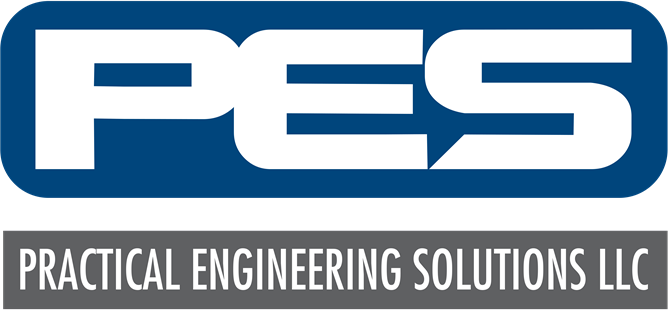4 min read
How to Cut CNC Machining Costs - A Design Engineer's Perspective
Blaine LaFleur
Sep 12, 2017
Abraham Lincoln once said, “Give me six hours to chop down a tree, and I will spend the first four sharpening the ax.”
While you probably aren’t reading this article for tree-felling advice, what Abe was getting at is that careful planning is important for any task. A large up-front investment in a project, utilizing engineering design thinking, can save you both time and money in the long run.

With MANUFACTURING, especially CNC machining, planning is especially critical. People new to the process may assume that the high level of automation involved will result in quick, cheap, and easily producible parts. In reality, the cost that goes into simply owning and running a CNC machine means that the cost passed on to you as a customer can skyrocket quickly. Getting your first quote back and learning that a single part may cost hundreds of dollars to make can be a real shock.
There are ways to mitigate costs though—certain factors in part design drive CNC cost more than others. As a design engineer, being aware of these factors early on in your development cycle can minimize their presence and begin to chip away at that top dollar price tag.
Reduce Your Material Cost
If you’re going to make any sort of part, you of course need to decide what it will be made out of. Many excellent materials can be machined, each with its own unique set of properties, applications, and costs. The price of different stock materials can vary widely but is usually based on general availability, as well as the difficulty to produce that material in a specific stock type (tube stock or especially thick sheets, for instance).
In general, you should simply choose the cheapest possible material that still fulfills your design requirements. Just doing functional prototyping? Try to stick to cheaper options, like ABS and aluminum. On the other hand, if you’re designing a downhole tool, you’ll probably be forced to use pricier materials.
Reduce Setup Time
Besides thinking about what your part will be made from, it is also important to think about how it will be made. Here’s where things start to get a little tricky, as there’s often more than one way to skin a cat (machine a part). We’ll start by looking at how design dictates the amount of setup time prior to machining.
Setup time, which consists of CAM (computer-aided manufacturing) programming, as well as machine setup and part fixturing, is commonly known as non-recurring engineering (NRE) cost. It typically makes up a large portion of a machining bill at the prototyping stage and should be minimized as much as possible.
It’s wise to assume your parts will be made on a 2.5/3 axis machine, due to their common availability. With this machine type, aside from the part profile, features can only be machined on one side at a time.
Most parts can be machined in six setups or less, as they are made from a six-sided, prismatic piece of stock material, such as a sheet, bar, or strip, that’s held in place by a vice or vacuum table. You should try to reduce this number as much as possible—1 or 2 is ideal—as each setup requires its own CAM program and fixturing step.
A Word on Special Fixtures
Occasionally, your part may have features that require non-standard fixturing, another source of added cost. These types of fixtures are varied enough to warrant a separate discussion, but below are two common ones and the features to avoid if you aren’t willing to shell out the extra dough.
-
Soft Jaws—parts with complex or organic geometry cannot always be held reliably in a standard vice, so a set of jaws with geometry mirroring the part surface are machined for a better grip.
-
Sine Bar—parts with features not parallel or normal to stock surfaces, such as a hole at a 30 degree angle, will need to be set up using this device, which allows the work piece to be held at custom angles.
Increase Quantity to Reduce Unit Cost
The good news about NRE cost, as its name suggests, is that it is non-recurring. That means if you’re making multiples of the same part, the same CAM programming and fixturing can be used over and over, or multiple parts can be cut at once from the same stock piece.
It is recommend to make more than one of each part, so that your unit cost is lower, but not so many that you’re making unneeded parts.
Reduce Machining Time
The last aspect of cost savings to consider is the actual time it takes to machine your part. For the most part, this is dictated by the two things you’ve already taken into consideration: material and part design.
1. Impact of Material Type
If your functional requirements allow you material flexibility, choosing the most machinable one should save money. In general, harder materials take longer to machine, due to the risk of breaking tools, but there are also exceptions to this rule. A few tips to keep in mind:
-
Cutting plastics too fast will cause the tool to rub the material, rather than cut it, leaving an undesirable surface finish. Aluminum, though harder than plastics like ABS, is actually slightly easier to machine, although material cost may be a trade off.
-
In the case of steels, the higher the carbon content of the alloy, the harder it is, and the more difficult it is to machine. Try to aim for a low carbon version of an alloy, if possible (e.g., 316L over regular 316).
-
Metals containing magnesium or zinc, such as brass, are highly machinable.
2. Impact of Part Design
Again, your functional requirements will likely drive part design, but here’s a list of considerations to keep in mind:
-
Tolerances—Tighter tolerances = higher cost.
-
Hole size & depth—Deep, small holes are slow to machine accurately and prone to tool breakage. Avoid if possible.
-
Internal radii—The smaller the radius, the smaller the end mill required to create it. The smaller the endmill, the slower it must machine. Go as big as is practical.
-
Depth of cut—Like holes, extra deep pockets take a long time to machine and may require special-order tools. Try to go no deeper than 10X your smallest internal radius (5X tool diameter).
-
Wall thickness—Thin walls require extra care.
-
Undercuts—Certain features, such as O-ring grooves or keyways, can (and often must be) machined with a tool made specially for undercuts. Other than this, it’s not usually a good idea to design a part with overhanging material.
Main Takeaways
There are many considerations that can help minimize CNC machining costs. Remembering every single one of them can be challenging, especially if you’re new to product design and development. To help speed along your planning when you get to this stage, just remember the three overarching cost-drivers you should aim to minimize:
-
Material costs, including stock size and material worth
-
Fixturing setups, both in number and complexity
-
Machining time, by eliminating tricky part features and geometry where possible
Keep these tips in mind early on in your design process to maximize the value of these cost-saving approaches, and soon enough the techniques will become habits your workflow.
ABOUT PES
PES will always be dedicated to providing top-notch customer service to meet our industry demands. We set ourselves apart with our consistency and timely turnarounds. We are always committed to being responsive to our clients, KEEPING OUR PROMISES, making delivery schedules, and standing by our designs!
From concept, design, and engineering, to project management and integrity services. We are your gateway to your journey's engineering endeavors. Including oil & gas, hemp & CBD, and food industries.
Providing services focusing on Facilities Engineering, Turn-Key Solutions, Downhole Tools, Structural Engineering, Civil Engineering, Commercial Construction Design and Engineering, Direct Lithium Extraction, and Drafting & Design.


